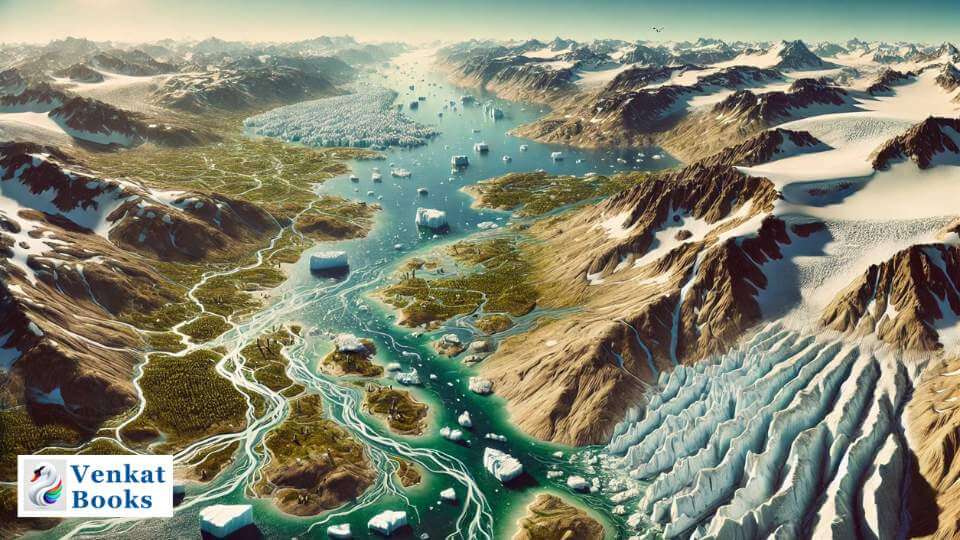Understanding the Holocene Thermal Maximum: Earth’s Natural Warm Period
The Earth’s climate has fluctuated over millennia, with periods of warming and cooling shaping the environment and ecosystems we see today. One such significant warm period is the Holocene Thermal Maximum (HTM), also referred to as the Holocene Climatic Optimum. This era, occurring roughly between 9,000 and 5,000 years ago, was marked by higher global temperatures, especially in the Northern Hemisphere. As we confront the realities of modern-day climate change, understanding past climate events like the HTM becomes critical for putting today’s warming trends into context.
| Aspect | Details |
|---|---|
| Time Period | 9,000 to 5,000 years ago |
| Causes | Driven by changes in Earth’s orbit and axial tilt (Milankovitch cycles) |
| Geographic Impact | Warming concentrated in higher northern latitudes, lesser impact in tropics & Southern Hemisphere |
| Northern Hemisphere Impact | 2–4°C warmer temperatures, expansion of boreal forests, more significant in Arctic regions |
| Sahara Desert Impact | Increased rainfall, Sahara transformed into a green, humid region with lakes and rivers |
| North America Impact | Expansion of forests and grasslands, northward migration of species such as oak and maple |
| Oceans and Sea Levels | Melting ice sheets contributed to rising sea levels, affecting coastal environments and ecosystems |
| Vegetation Shifts | Forests expanded into colder regions, grasslands replaced tundra, shifting ecosystems |
| Human Impact | Warmer climates supported early human settlements and agriculture in Mesopotamia and Northern Africa |
| End of HTM | Transitioned gradually into cooler, more stable late Holocene climate patterns |
| Lessons for Modern Climate Change | Natural vs. anthropogenic warming, speed of modern climate change much faster |
Climate Change Books
- #1 NEW YORK TIMES BEST SELLER • In this urgent, authoritative book, Bill Gates sets out a wide-ranging, practical—and accessible—plan for how the world can get to zero greenhouse gas emissions in time to avoid a climate catastrophe
- Bill Gates has spent a decade investigating the causes and effects of climate change
- With the help of experts in the fields of physics, chemistry, biology, engineering, political science, and finance, he has focused on what must be done in order to stop the planet’s slide to certain environmental disaster
- In this book, he not only explains why we need to work toward net-zero emissions of greenhouse gases, but also details what we need to do to achieve this profoundly important goal
- He gives us a clear-eyed description of the challenges we face
What Was the Holocene Thermal Maximum?
The Holocene Thermal Maximum was a natural period of warming that occurred during the early to mid-Holocene epoch, following the retreat of the large ice sheets from the last glacial period. The global temperatures during this time were generally higher than what we experience today, with significant warming concentrated in the higher northern latitudes, including areas like Greenland, Northern Europe, and Siberia.
This warm period lasted for several millennia, peaking at different times in various regions due to regional climate dynamics. In some areas, the HTM temperatures were up to 2–4°C higher than modern averages. However, this warming was not uniform across the planet, and some regions experienced a much milder effect or even slight cooling during the HTM.
What Caused the Holocene Thermal Maximum?
Unlike today’s global warming, which is primarily driven by human activities such as the burning of fossil fuels and deforestation, the Holocene Thermal Maximum was largely the result of natural climate drivers. The primary factor behind this warming was the Milankovitch cycles—regular changes in Earth’s orbit and axial tilt that influence the amount of solar energy the planet receives.
Specifically, during the HTM:
- Axial tilt was at its maximum, meaning that the Northern Hemisphere received more solar radiation during the summer months.
- Precession of Earth’s axis led to stronger seasonal contrasts, with warmer summers in the Northern Hemisphere.
- As the large ice sheets from the previous glaciation receded, the albedo effect (reflectivity of ice) decreased, allowing more solar radiation to be absorbed by Earth’s surface, further contributing to regional warming.
Regional Impacts of the Holocene Thermal Maximum
While the Holocene Thermal Maximum was a global phenomenon, its effects were most strongly felt in the Northern Hemisphere. The nature and intensity of warming varied considerably across different regions:
Northern Hemisphere
The HTM had a significant impact on the Arctic and Northern Europe. In these areas, temperatures during the summer months were often several degrees higher than modern temperatures. Evidence from ice cores, lake sediments, and pollen records suggests that forests expanded northward, and ecosystems adapted to the warmer climate. This period also saw the expansion of the boreal forests, with plant species moving into regions that were previously too cold for them to survive.
Sahara Desert
One of the most remarkable examples of how the HTM affected the planet is the greening of the Sahara Desert. What is now one of the driest and most inhospitable regions on Earth was, during the HTM, home to lakes, rivers, and grasslands. This period, known as the African Humid Period, allowed human populations to thrive in what is now the Sahara, with archaeological evidence of early human settlements, tools, and artwork indicating a more hospitable environment.
North America
In North America, the warming led to the expansion of forests into areas that were once dominated by tundra. The warmer temperatures also facilitated the growth of the Great Plains and influenced the distribution of species across the continent. Fossil records and pollen data indicate that species such as oak, pine, and maple moved northward, establishing in regions that had previously been much colder.
Oceans and Sea Levels
As the global ice sheets continued to melt, the HTM contributed to rising sea levels. Although the rate of sea-level rise during this period was slower than in the last glacial transition, it still had a notable impact on coastal ecosystems and human populations living near the coastlines. Marine sediments indicate changes in ocean circulation patterns, and coral reef systems also adapted to the rising sea levels, growing vertically to keep up with the changing environment.
Environmental and Ecological Changes During the HTM
The Holocene Thermal Maximum triggered a series of environmental changes that had lasting impacts on Earth’s ecosystems:
- Vegetation Shifts: Warmer temperatures allowed forests to expand into previously colder regions, and grasslands replaced tundra ecosystems. This shift in vegetation led to changes in the distribution of animal species and affected early human populations that depended on these ecosystems for survival.
- Hydrological Changes: The warmer climate brought changes to rainfall patterns, leading to more humid conditions in some areas, such as the Sahara, and drier conditions in others. The African Humid Period, for example, saw a significant increase in rainfall across northern Africa, transforming the region into a mosaic of lakes, rivers, and savannas.
- Human Impact: Archaeological evidence suggests that human populations benefited from the warmer climate in some regions. Early human settlements in Mesopotamia, Northern Africa, and Europe flourished as the climate became more conducive to agriculture and animal husbandry.
The End of the Holocene Thermal Maximum
The HTM did not come to an abrupt end but rather transitioned into the cooler, more stable climate that characterized much of the late Holocene. As Earth’s orbital parameters continued to change, the Northern Hemisphere began receiving less solar radiation, leading to cooler summers and the gradual reestablishment of modern climatic patterns. The African Humid Period ended, giving way to the arid Sahara Desert we know today, and forests in the Northern Hemisphere retreated southward.
Lessons for Understanding Modern Climate Change
The Holocene Thermal Maximum serves as a reminder that Earth’s climate is inherently dynamic and has undergone significant changes long before the advent of industrialization. However, there are critical differences between the HTM and modern-day global warming:
- Natural vs. Anthropogenic: The HTM was driven by natural processes such as changes in Earth’s orbit, whereas today’s warming is largely driven by human activities, particularly the increase in greenhouse gas emissions.
- Speed of Change: While the HTM occurred over millennia, modern climate change is happening at an unprecedented rate, with significant temperature increases occurring over the span of just a few centuries.
Studying the HTM helps climatologists understand how ecosystems respond to warming and can offer insights into what the future might hold for regions experiencing rapid warming today.
Summary
The Holocene Thermal Maximum was one of Earth’s natural warm periods, driven by orbital changes and amplified by melting ice sheets and changing albedo. Although it occurred thousands of years ago, its effects on ecosystems, human populations, and sea levels offer valuable lessons for understanding our current climate crisis. By studying past climate events like the HTM, scientists can better predict how the planet might respond to ongoing and future changes, providing guidance on how we can adapt to a rapidly warming world.


